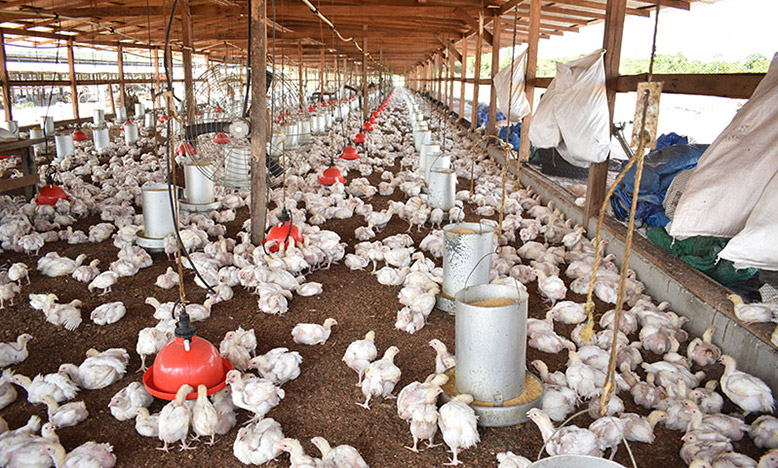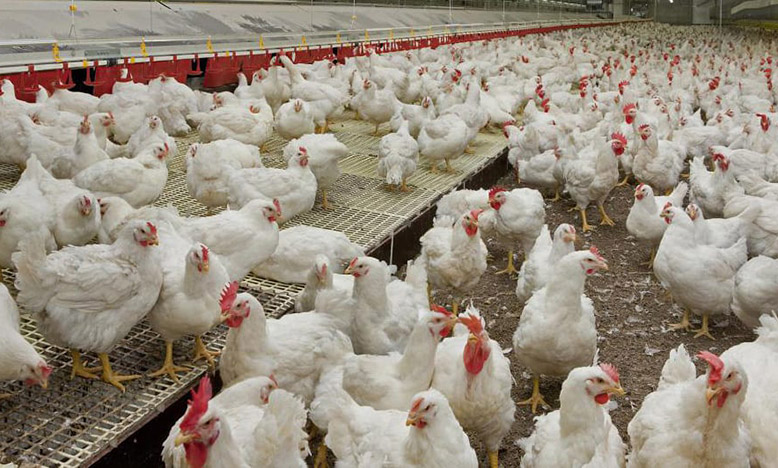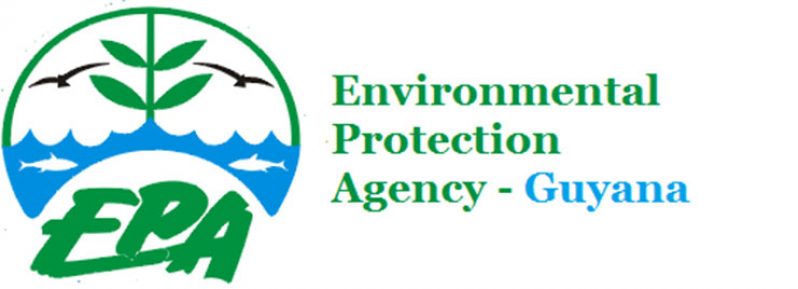THE Environmental Protection Agency (EPA) has a mandate to take necessary steps for the management, conservation, protection, and improvement of the environment. As such, it takes steps to prevent or control pollution; assess the impact of economic development on the environment, and promote sustainable use of natural resources.
Over the years, one step the Agency has taken is to develop regulations, strategies, action plans and guidelines to support its efforts to curb some of the more persistent environmental issues. This week, we will examine the EPA’s Environmental Guidelines for poultry rearing.
 With the growing fast-food industry in the country, the demand for poultry and its products has increased. Poultry rearing is a quick, convenient business that not only supports the local demand for poultry in the fast-food business; it also creates jobs and income-generating opportunities, which is particularly important to small-scale farmers. An unfortunate fact, though, is that if not done correctly, poultry rearing can have negative consequences for the environment and human health. Poorly managed poultry rearing operations can result in odour nuisance, water and land pollution, and lead to human health conditions of the skin, eyes and ears.
With the growing fast-food industry in the country, the demand for poultry and its products has increased. Poultry rearing is a quick, convenient business that not only supports the local demand for poultry in the fast-food business; it also creates jobs and income-generating opportunities, which is particularly important to small-scale farmers. An unfortunate fact, though, is that if not done correctly, poultry rearing can have negative consequences for the environment and human health. Poorly managed poultry rearing operations can result in odour nuisance, water and land pollution, and lead to human health conditions of the skin, eyes and ears.
Further, waterborne diseases such as diarrhoea can be caused by polluted water emanating from poultry-rearing facilities.
In poultry rearing, certain considerations must be taken to prevent associated issues that have the potential to compromise the quality of the environment and human health. The EPA is regularly in receipt of complaints related to poultry-rearing activities, and, more often than not, the business against which a complaint is made started with a few chickens, but then expanded to a large number of birds without putting in place the necessary environmental, health and safety measures.
This week’s article presents the essentials of the Environmental Guidelines for Poultry Rearing. The objective of this article is to inform both farmers and consumers of the measures that must be in place in order to operate poultry-rearing facilities to safeguard the environment and human health.
 Who needs Environmental Authorisation?
Who needs Environmental Authorisation?
If you plan to set up, or are operating a poultry rearing operation with 500 birds or more, then you need to apply to the EPA for Environmental Authorisation. It should be noted that the guidelines below should be considered, even if less than 500 birds are being reared.
*LOCATION:
The best location for poultry-rearing facilities is in agricultural areas where there are existing farmlands. Poultry rearing operations should be at least 50 metres (164 feet) downwind from residences, schools, hospitals, etc. and water bodies.
*HOUSING:
The poultry pen (s) should be designed to allow proper ventilation, and enable workers to perform their tasks easily. The materials recommended for use to build pens include:
*FLOORS: Concrete
*WALLS: Clay bricks, hollow blocks, lumber, round wood, staves, mesh or wattle. Walls should be boarded up to 0.30 m (1 ft.) from the floor, and continued to the roof with mesh or other suitable material for ventilation.
*ROOF: Waterproof material e.g., aluminium sheets, galvanised sheets, palm, shingle etc. An overhang of 0.90 m (3 ft.) is ideal.
There should be an effective drainage system around pens, which allows all washings from the pen to run into the exit drains.
*MANAGING SOLID WASTE
Different types of waste are produced from poultry-rearing operations, and it is important to manage them, especially when large volumes are produced. This needs to be done to avoid causing discomfort to neighbours and workers at the poultry farm. Measures that should be taken to effectively manage poultry waste emanating from poultry-rearing operations include:
*FEED STORAGE: Feed should be kept in a specific area that is dry, well-ventilated and meshed to avoid pests. Install storage racks 15-30 cm above the ground to prevent absorption of moisture and contamination;
*KEEP ANIMAL WASTE DRY: Instead of flushing with water, remove animal waste and bedding by scraping to ensure that it is kept as dry as possible when being removed. After scraping, the area should be washed with water, preferably with high-pressure, low-flow nozzles, and disinfectant.
*USE MANURE AS FERTILIZER: Instead of disposing of chicken manure, collect it and use as a crop fertiliser; however, manure from sick birds should not be used for this purpose.
*STORE MANURE: Manure that is to be disposed of should be stored in a roofed area, and away from water bodies, floodplains, wellheads or other sensitive environments until it is ready to be disposed of.
*COMPOST: Other wastes such as cardboard boxes, feathers, cleaning containers, etc., should be disposed of at an approved site or can be used in compost and reused as organic manure.
*CLEAN STORAGE CONTAINERS: Wash and disinfect containers used to store manure after you have emptied them; this is to avoid the build-up of pests and odour.
We advise all poultry operators to consider these guidelines. We advise you to visit our office if you are operating without a permit. Additionally, you can find the complete Guidelines on our website: www.epaguyana.org.
Join us next week for more on our Poultry Rearing Guidelines.
You can share your ideas and questions by sending letters to: “Our Earth, Our Environment”, C/O ECEA Programme, Environmental Protection Agency, Ganges Street, Sophia, GEORGETOWN, or email us at: eit.epaguyana@gmail.com or follow us on Facebook and Instagram.



.jpg)










